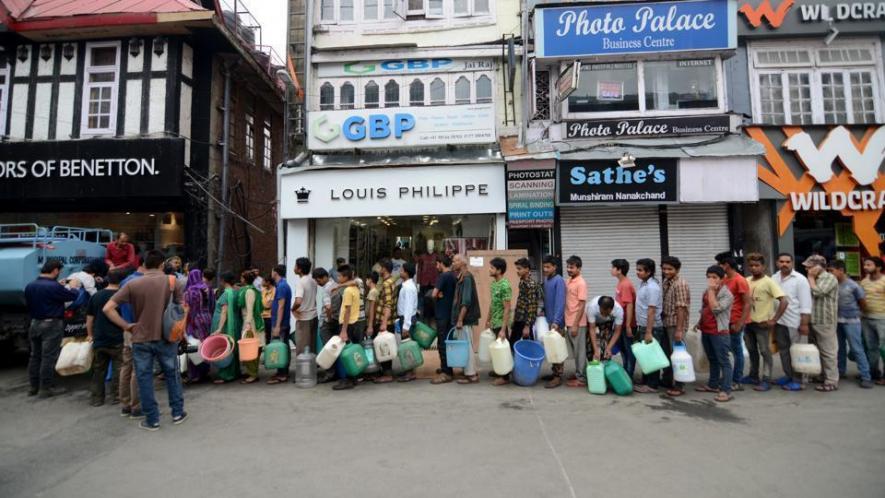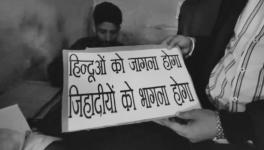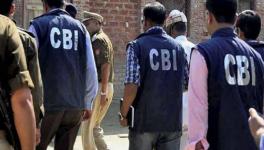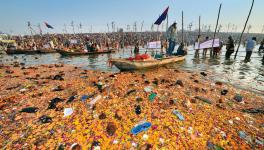Shimla: Water Crisis and a Tale of Corruption

Image Courtesy: Hindustan Times
Shimla, the queen of the hills, has been battling an unprecedented water crisis over the past several decades, leading to intense protests. Images of residents queuing for water, and policemen guarding tankers have evoked comparisons with South Africa's Cape Town, where riots occurred due to water shortage. Shimla, with a population of 2 lakh people, has faced water shortage in the past too but this year's crisis reveals a tale of mismanagement, short-sightedness and corruption.
Ashok Kumar Minocha, a resident of Daisy Bank estate, said he hadn't taken a bath in a week. He added, " A nauseating odour pervades the streets because people are not flushing their toilets. We last got water on 27th May."
Shimla has an installed capacity of 65 Milliion litres per day. While the city requires 45 Million litres of water for its needs, it only gets 35 Million Litres. The poor supply is due to two reasons: constant reduction in levels of water bodies and leakages in the water supply network. The city, equipped with a century-old pipelines laid down by the British, loses half of the water supplied due to leakages.
The city has been getting water from five sources; Gumma, Giri, Ashwini Khad, Churat and Seog. While the water supply has been stopped from Ashwini Khad after it got contaminated, the supply from Gumma and Giri has also reduced by 50 per cent. But the crisis also has its roots in mismanagement and corruption in civic bodies.
Sanjay Chauhan, former mayor and Communist Party of India (Marxist) member, said, "The present government has introduced water tankers to deal with the crisis. But it is making the problem more severe. The tankers get filled from government facilities. Why do you need tankers when you have a wide-spread network of pipelines?"
"People who are living in areas far from roads are not getting water from tankers. The whole system has been devised to benefit tanker operators who are closely associated with the BJP. Secondly, the supply through tankers also leads to a reduced pressure level in pipes, which apparently results in lack of supply in some areas," added Chauhan.
He added that while residents usually had connections with 0.5 inch pipes, hoteliers had connections with 1.5 inch pipes.
Tikender Panwar, former Deputy Mayor, added that the members of the Congress and BJP were responsible for the laying of sub-standard pipes, which led to leakages. " We detected that a certain section of a pipeline measuring two kilometres was leaking profusely. When we measured the thickness of the installed pipes, we found it was less than prescribed limit. We filed a case with the vigilance department and got the segment changed, " added Panwar.
Panwar recalled that the system of supply and distribution had been unified during their term. He added, "The unification helped fix the responsibility with one authority. We built the Greater Shimla Water Supply and Sewage Circle which ensured smooth supply on alternate days."
The crisis has hit the common people severely. Students are not going to schools. Similarly, all public toilets have been shut.
What's the solution?
Panwar suggested that several local water bodies called 'Bauris', which are mildly contaminated, can be turned into safe water sources after some repair. They can help manage the crisis in short run but the linking of Kol Dam to city is the only permanent solution. The authorities are still considering the matter and discussions are on. It must be completed at the earliest for the resolution of the crisis,
he said.
Emails sent to present mayor did not illicit any response.
Get the latest reports & analysis with people's perspective on Protests, movements & deep analytical videos, discussions of the current affairs in your Telegram app. Subscribe to NewsClick's Telegram channel & get Real-Time updates on stories, as they get published on our website.
























